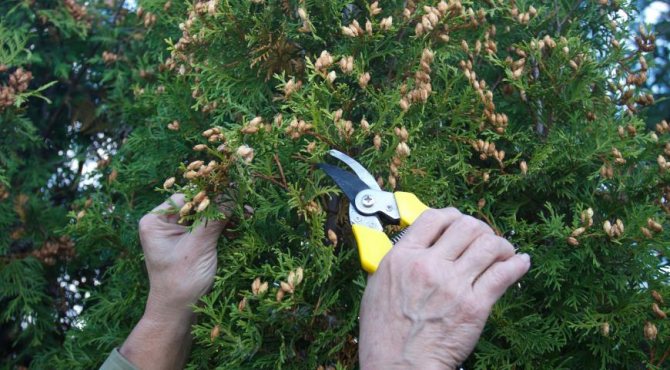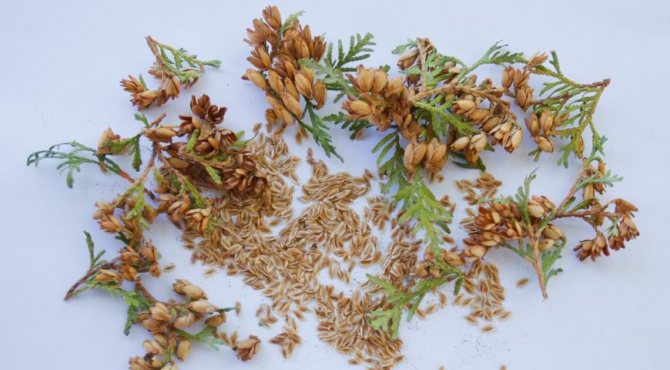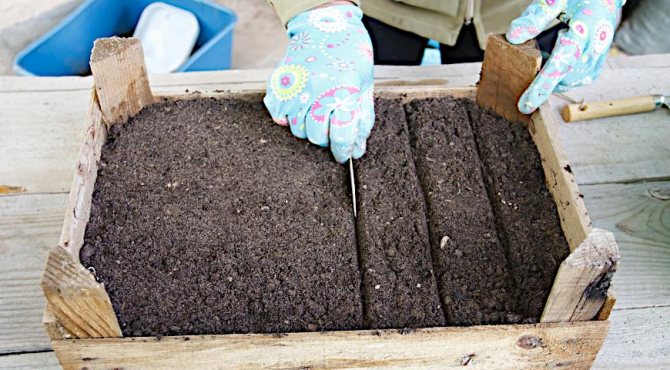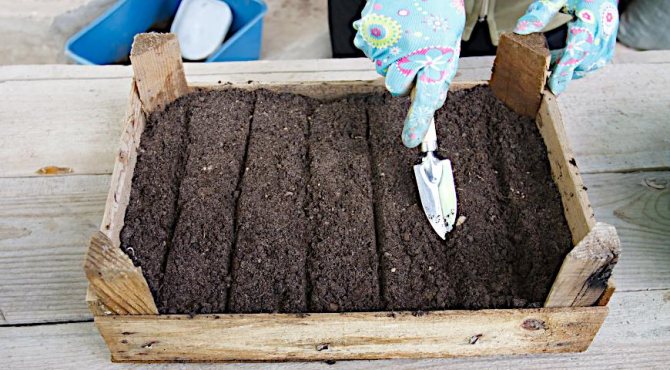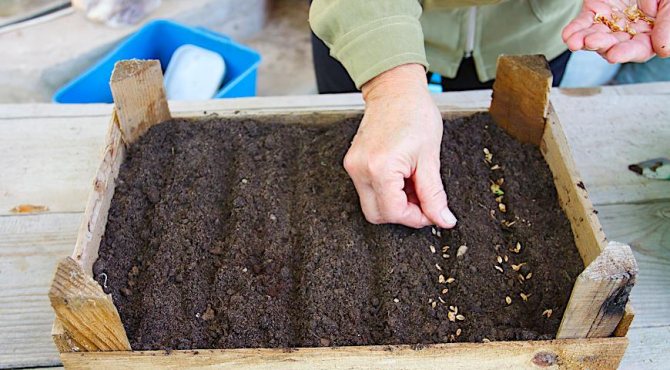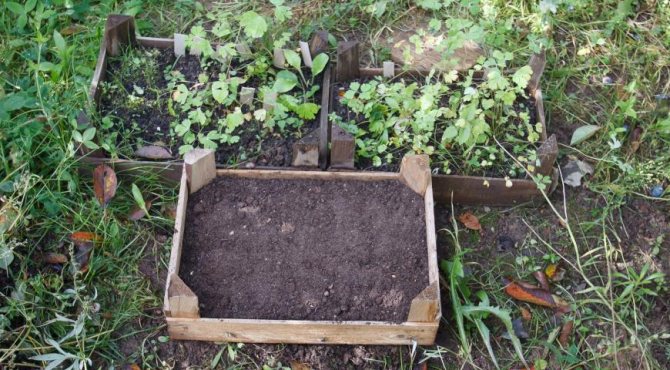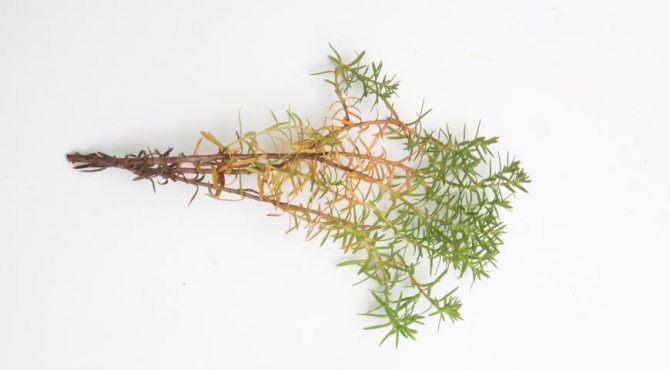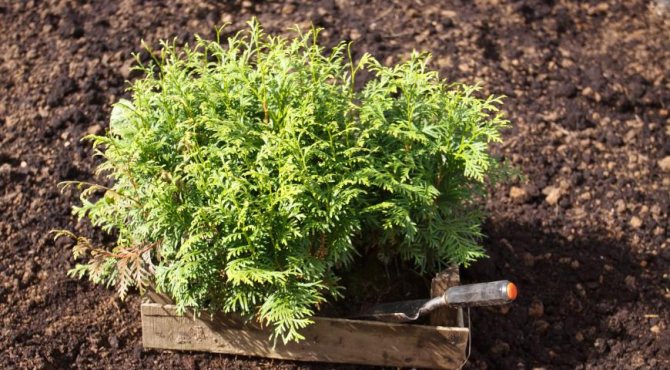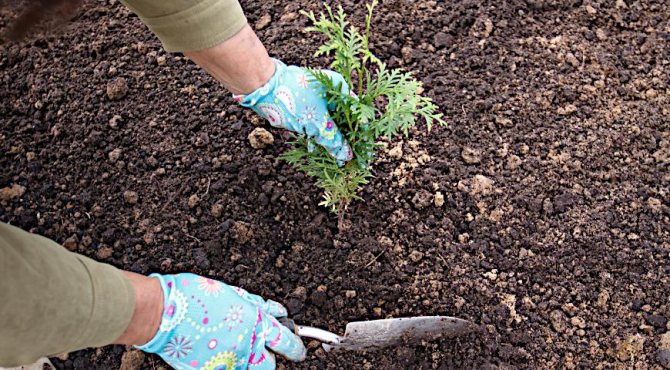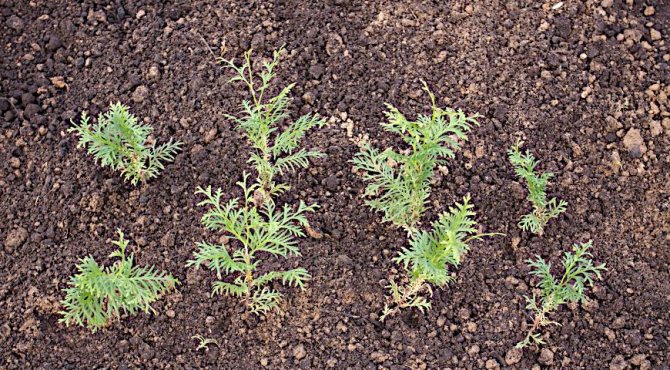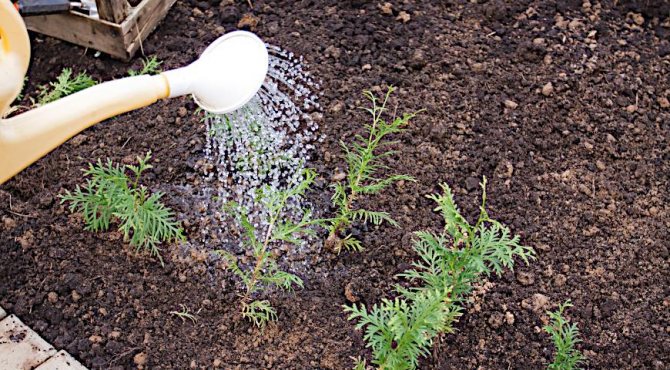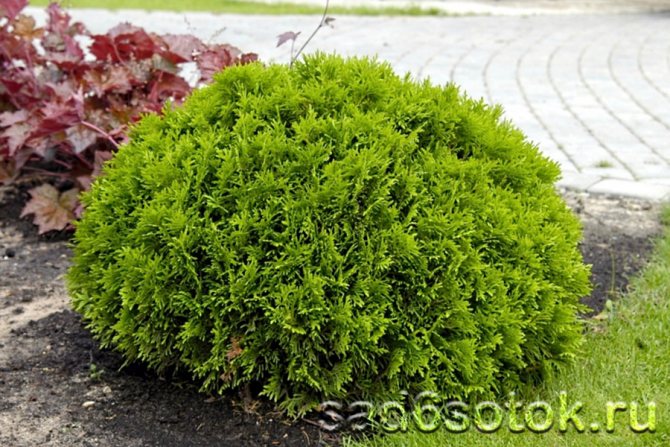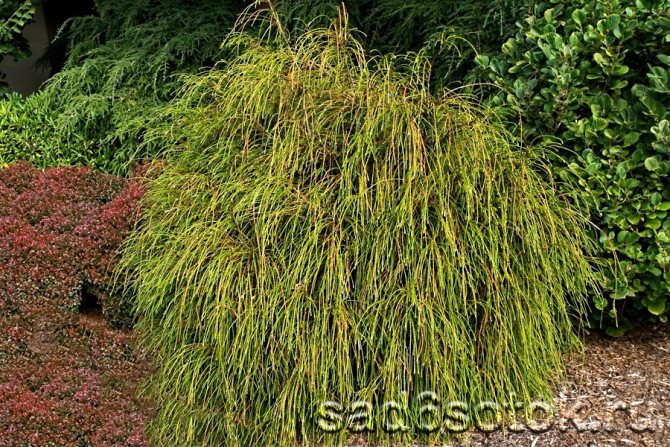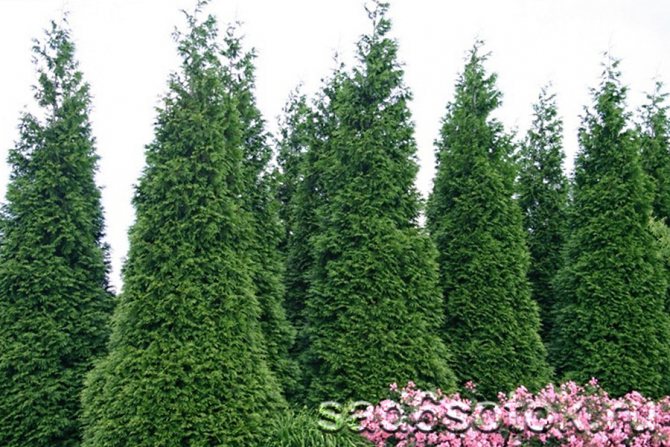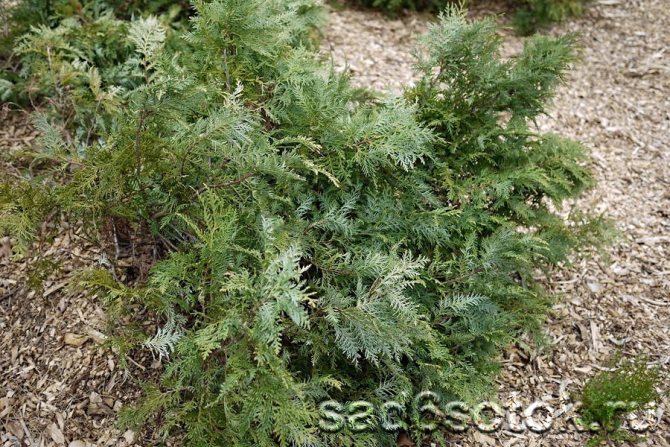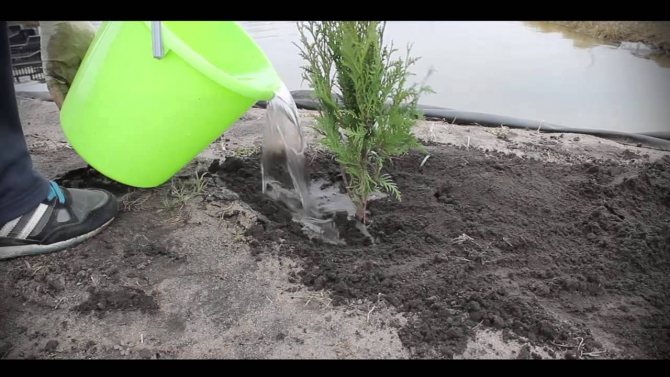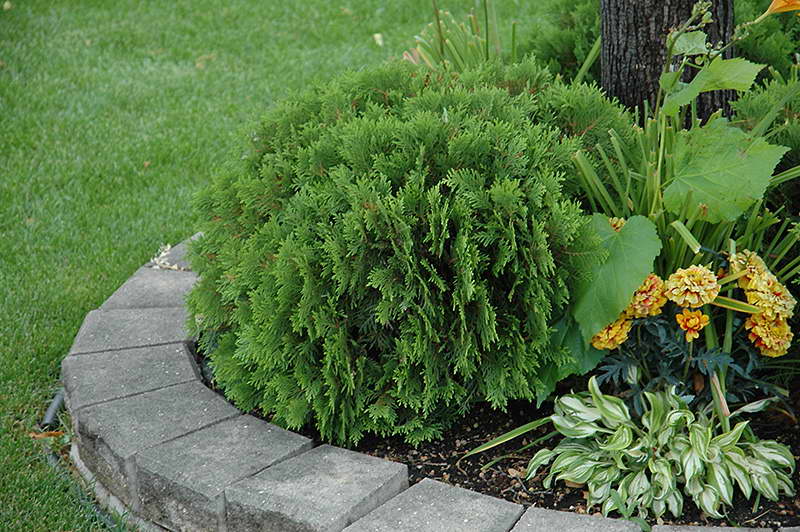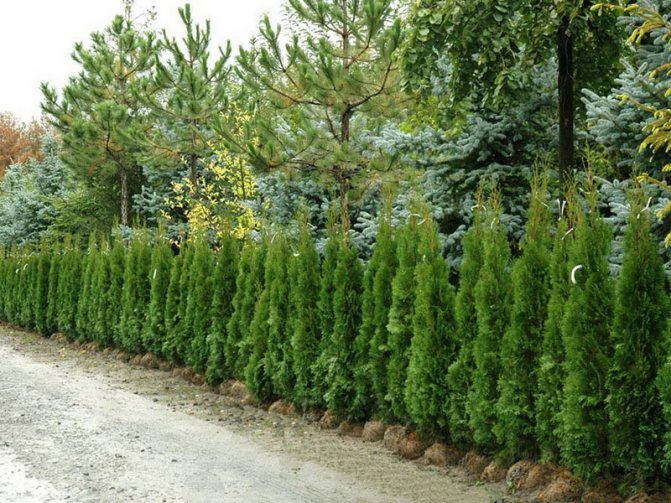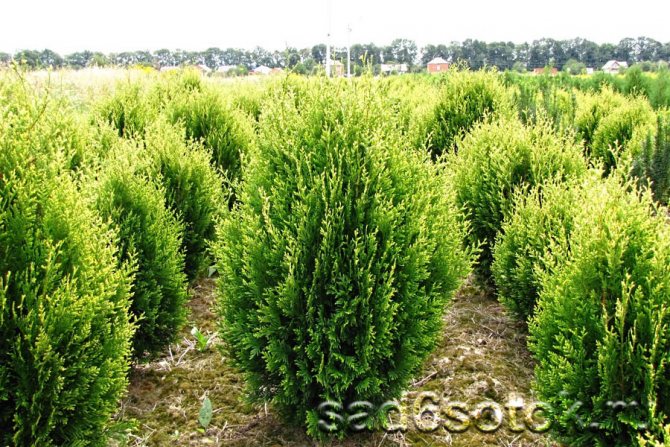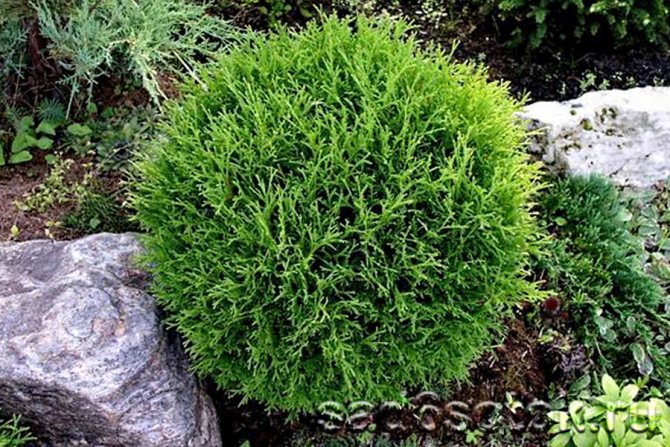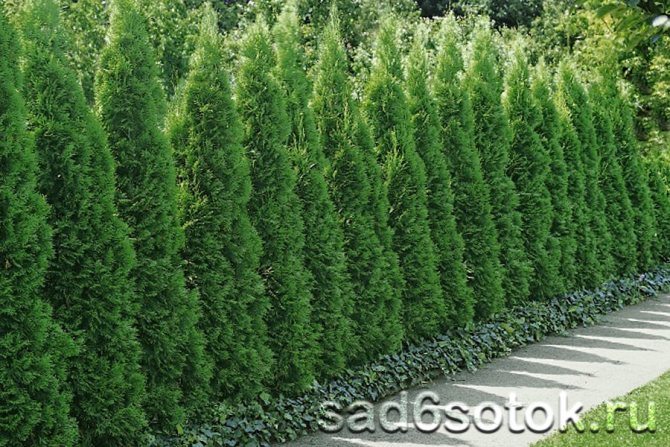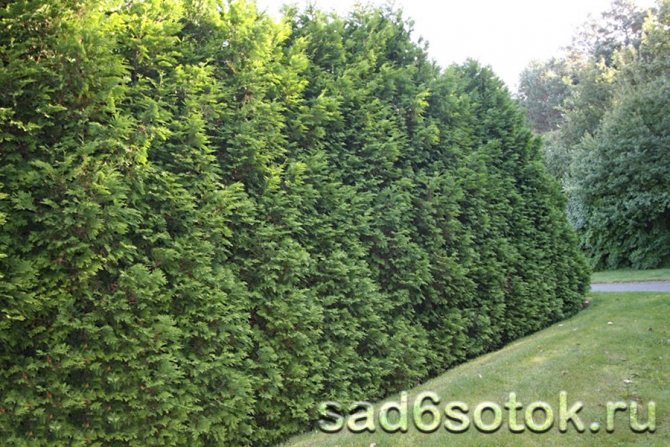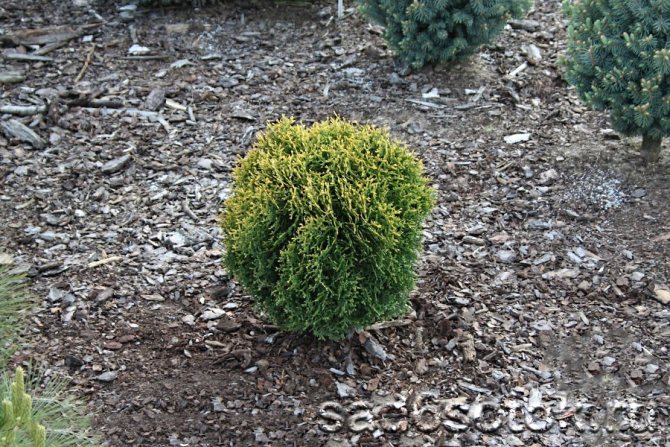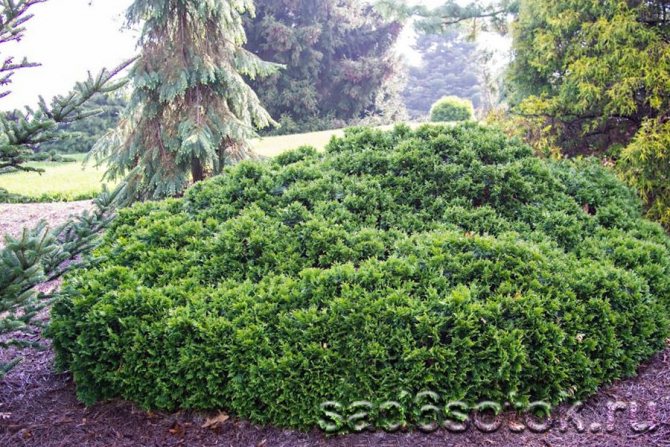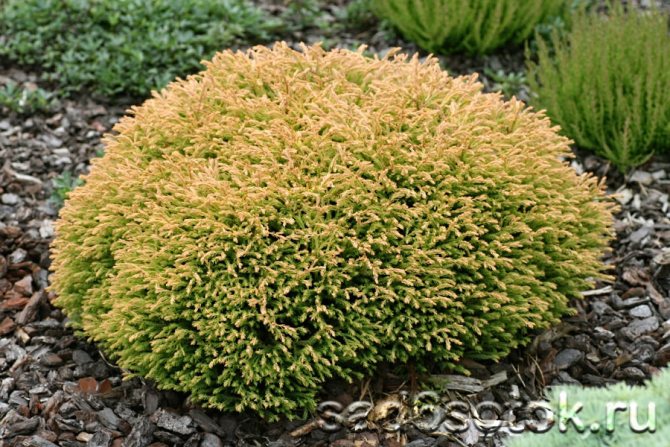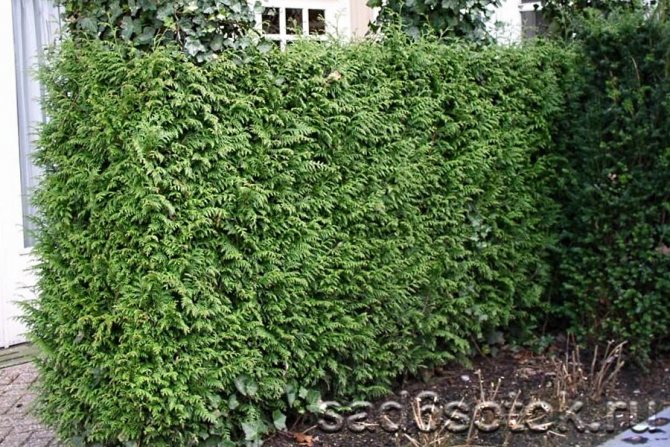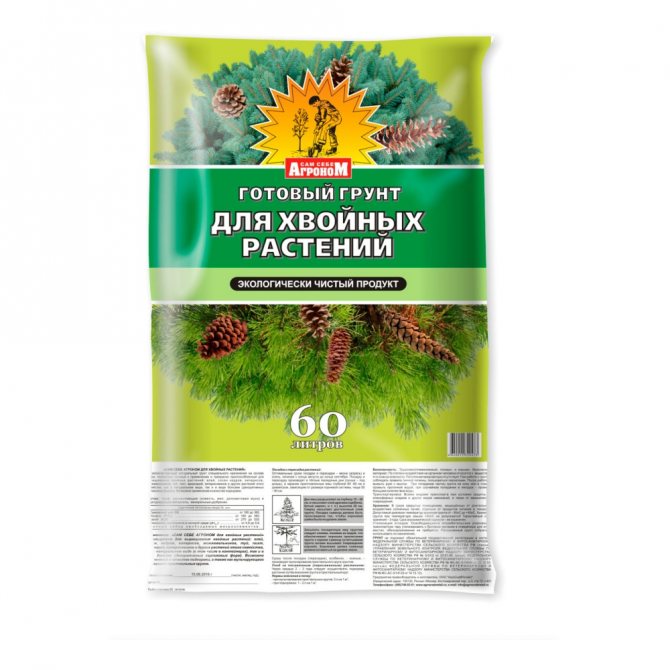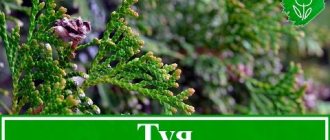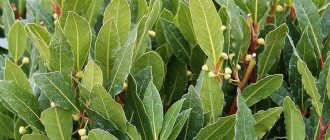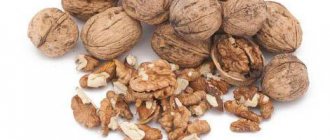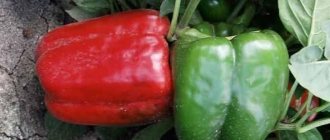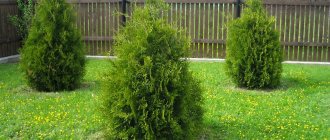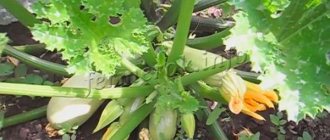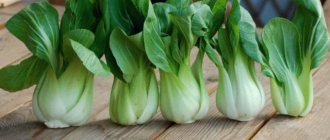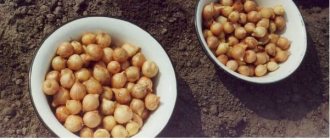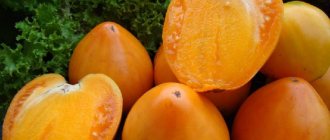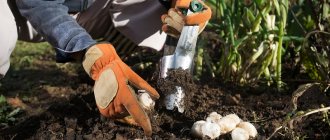Thuja is a beautiful coniferous tree, which is actively used by masters of landscape design to create amazing compositions. And in the home interior, flower growers successfully grow it, because it is believed that thuja gives longevity and returns vitality.
To plant a tree on your site, you can purchase a ready-made seedling. But planting thuja seeds is also possible, so we will tell you how to do it.
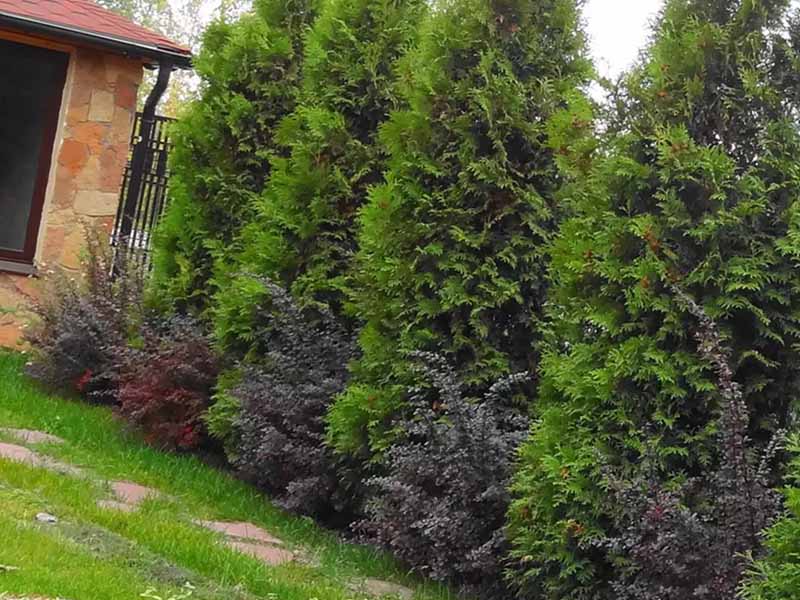
Description
Thuja belongs to the Cypress family. Came to Russia from North America. These trees delight gardeners all year round with their dense green crown. Each variety of this tree has its own specific coniferous smell. The average life expectancy is about 75 years. There are species whose age is over 100. Today, more than 35 species of this coniferous tree are known. They all differ in characteristics. The first visual difference to notice is color. The color palette is very wide: from deep blue to mustard.
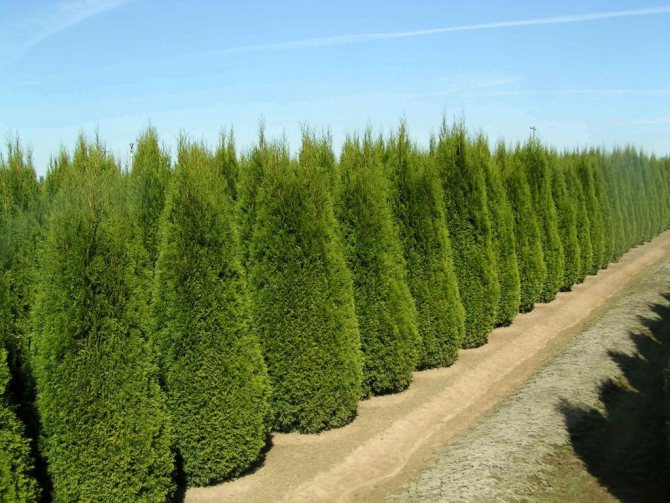

Thuja
The tree has increased winter hardiness, unpretentious to the soil composition, does not require constant care, drought-resistant. Often used to complement landscaping plants. Some varieties are used as independent decorations in landscape design.
The health of a tree can be judged by its needles. If the thuja greens are juicy, correspond to the color of the variety, then the tree is healthy and does not require additional watering and dressing. If the branches and needles are dry, have acquired a yellow-brown hue, the tree needs additional moisture and mineral fertilization.
You should also choose the right container in which you can plant the thuja. Since this tree is quite large, the pot in which it grows should grow by 1.5 sizes with each subsequent repotting. The root system should feel free in the container.
Important! Thuja propagates in places protected from winds and drafts. Very young seedlings require shelter for the winter period, for several years. The tree can be grown both outdoors and at home. It is recommended to observe the temperature regime for a tree that grows at home. The temperature should not drop below 8 ° С and rise above 20 ° С. That is, in an apartment, at room temperature, the seeds will develop well.
In addition to the fact that the tree is used in landscape design, its individual elements are used in traditional medicine recipes. Tinctures and decoctions are prepared from cones and needles, good medicinal teas are obtained from the bark, and essential oils help get rid of the initial signs of sinusitis and sinusitis.
Germinating seeds at home
How to grow blueberries from seeds at home
To decorate the site with decorative thuja, its seedlings can be purchased in the nursery, or you can plant it yourself. Growing thuja from seeds on your own at home is more profitable than buying a large number of seedlings in nurseries.
In order to plant thuja seeds, they must be collected. They are collected from cones that grow on thuja in the first year of fruiting. Seed cones are easily broken off from the branches of a tree, laid out in a warm room, so that they open.It is not worth delaying the planting process, since a few months after the seeds have fallen out of the seed cones, they will not be able to germinate, since their germination capacity decreases by more than 50%.
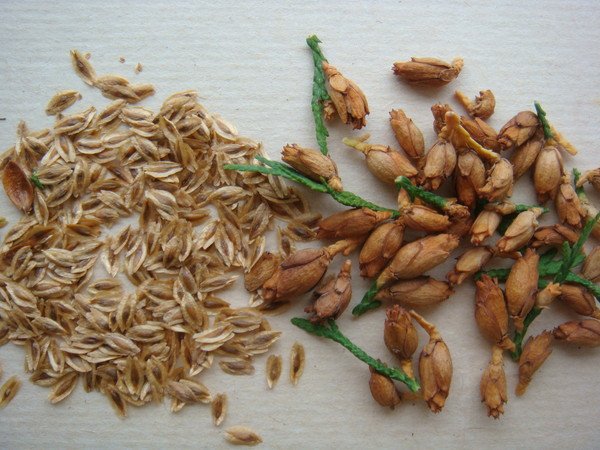

Thuja seeds
How to grow thuja from seeds obtained by this method? The most natural way to grow thuja from seeds is to sow them in the ground for the winter. With this method, sowing is carried out at the beginning of December, and the seeds are not soaked, no additional drugs that accelerate plant growth are required. The first shoots can be seen in the spring, after the end of the frost on the soil. At first glance, they look like dill seedlings. In the first year after planting, the thuja will grow no higher than 10 cm.In the second year, its growth will reach about 25 cm.In the third year, it will grow to 50 cm.
There is another way how to grow thuja from seeds at home. The breeding method consists in cold treatment of the planting material. For this, thuja seeds are placed in a container with wet sand or sawdust and placed in a cold place where the temperature does not rise above 5 ° C.
Note! The best option for placing containers with seeds is the lower shelf of the refrigerator compartment.
Popular varieties of thuja
For growing thuja from seeds, you can use any plant varieties. The following varieties of western thuja are considered the most popular for home cultivation:
- Thuja "Danica" belongs to dwarf varieties, has a layered bark of a reddish hue and soft shiny needles of a rich, dark green color.
- Thuja "Smaragd" is a conical and weakly branched shrub that grows no higher than 2 meters. Glossy needles are dark green.
- Thuja "Woodworth" is a dwarf spherical variety, no more than 2.5 m high. Shoots are straight and flat, needles are dark green in color.
- Thuja "Erikoides" looks very decorative and attractive. It is a miniature shrub with a spherical or broadly conical crown. The plant reaches a height of about 1.5 m. Shoots are weakly branched, thin, long. The needles are painted in light green tones, acquiring a beautiful golden hue in the fall.
- Thuja "Filiformis" is an original heather-like variety of thuja, which looks like a juniper. The shoots are flexible, the needles are soft, two-colored.
- Thuja "Zebrina" has the shape of a cone and reaches a height of no more than 2.5 m. The color of the needles is two-color: bright green with light yellow veins.
- Thuja "Kornik" is a fast-growing variety, capable of reaching up to 3 meters in adulthood. The needles are green, with yellowish tips.
- Thuja "Vipkord" is an unusual dwarf variety of thuja with drooping, cord-like, non-branching shoots.
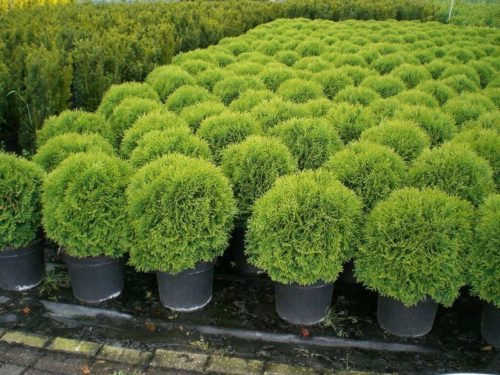

Thuja application
- Various varieties and varieties of thuja allow the plant to be used in a variety of decorative plantings and landscape designs.
- To create dense hedges, specimens of the same variety and size are planted.
- An evergreen plant, thuja, in addition to its decoratively attractive purpose, also performs additional functions: it protects the site from wind and drafts at any time of the year, refreshes the air with useful phytoncides.
- Also known are the healing properties of thuja, capable of having a hemostatic, wound healing and bactericidal effect. The pleasant smell of pine needles has a calming effect on the human nervous system, helps to restore strength, and has a preventive effect in ARVI.
- Another, exotic, application of the coniferous "beauty" is the formation of a tree - bonsai. To do this, the crown of the thuja is constantly cut off, and the branches are fixed in the desired direction.
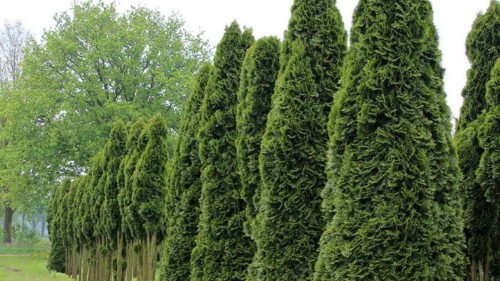

conclusions
- Reproduction of thuja by seeds is a cheap and affordable method, as a result of which a large number of viable seedlings can be obtained in 3-4 years.
- It is not worth storing the harvested thuja seeds for a long time, as they quickly lose their germination.
- Seed stratification is the most important condition for the successful cultivation of thuja from seeds.
- Thuja is an unpretentious and hardy culture widely used by landscape designers and amateur gardeners.
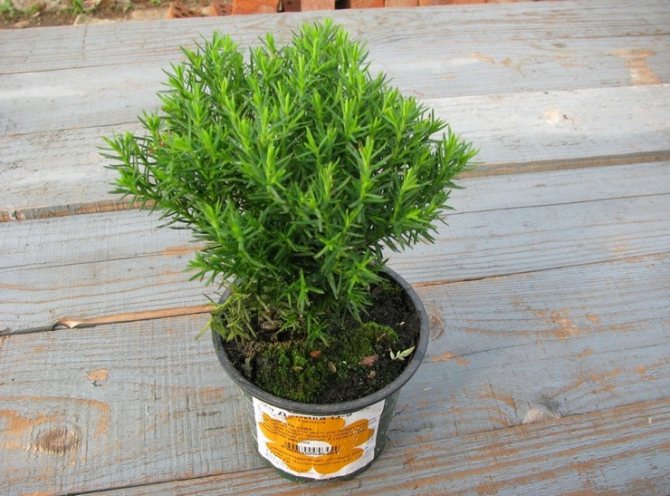

Planting seeds in the ground
How to grow blueberries from seeds at home
The planting of seeds germinated by the second method takes place in early February. Containers with germinated seeds are placed under the lamp in order for the earth to warm up, and the seedlings are further developed. At the bottom of the container there should be a drainage layer, about 3-4 cm high. For this, you can use charcoal, expanded clay or even foam. The second layer is the soil mixture. Prepared soil for growing coniferous shrubs and trees is considered the best option for a soil mixture intended for growing thuja from seeds. On the soil packages, you can find step-by-step instructions for preparing the land for planting seeds and seedlings. The third layer should be sand. It should be about 2-3 cm high. Before sowing seeds in this soil mixture, it is treated with a weak solution of potassium permanganate. This is done in order to rid the soil of bacteria. The seed is seated in a checkerboard pattern. The distance between them should not be less than 1 cm. After planting, the seedlings are sprayed with warm water and covered with a greenhouse film or agrofibre. These containers should be located in a room that maintains a temperature regime of about 20 ° C. When the first shoots appear, the containers are removed to a cool place, which is well illuminated by the sun's rays.
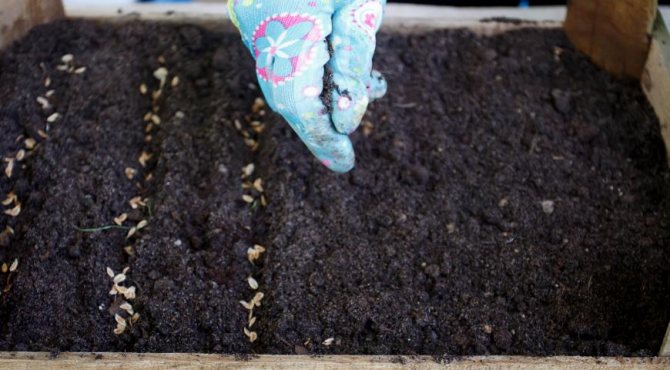

Planting thuja seeds in the ground
After 2 months, the greenhouse film or agrofibre, which covered the containers with thuja seeds, can be removed. If roots are visible on the soil surface, they must be sprinkled with sand. In the first year, plants need to be covered with soil.
A year later, in the spring, when the frosts leave and the ground warms up a little, the thuja seedlings can be dived. When picking, thuja seedlings need vitamin supplements. It is also necessary to apply fertilizers containing a large amount of nitrogen. It is advisable not to allow the land to dry out, but watering should be moderate. In their second winter, thuja seedlings are not yet ready to grow in the open air, even with the necessary shelter. The best option would be to place the seedling pots in a greenhouse. In the spring, the plants should be hardened. To do this, pots with seedlings are taken out into the open air. You can transplant them into open ground already in the autumn.
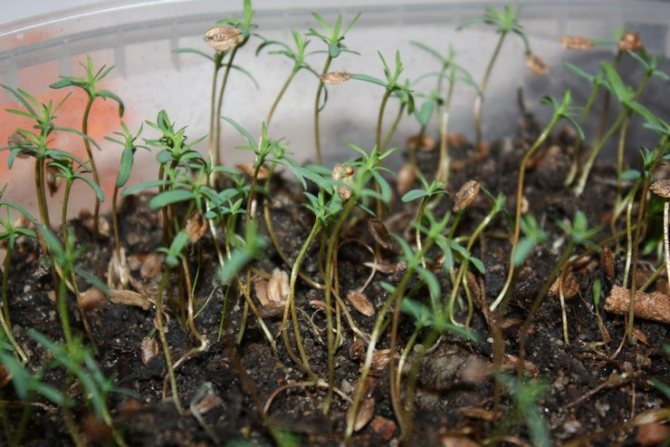

Sprouted thuja seeds
Preparing the soil for the box
It is in the boxes that it is customary to plant thuja. You can display everything right outside to create ideal growth conditions. You should not rush to transfer the sprouts from the box to the soil. Young animals are often not ready for open living. There is an acute shortage of useful microelements.
The ideal soil is considered to be:
- sand 50%
- peat 25%
- sod land 25%


All components are simply poured together. Nothing needs to be compacted strongly. Rows, small in depth, are made. The distance between them can be kept within 6 centimeters. Seeds are now scattered not far from each other. Sprinkle with soil so that there is one centimeter above the ground level - a small bump is formed.
We water the beds themselves with water, but adhere to the rules for laying them. That is, we pour it on the planted seeds. When soil is eroded, everything should be restored immediately so that the grains are completely covered with earth.
Breeders' advice: in the spring and for the entire summer period, boxes should be removed under other trees. Their foliage will help protect the crop from the scorching sun, which can quickly destroy all the work done.
Transplant and care in the open field
But in a too shaded place, the needles will not have a rich green color, the crown will not be so dense.A good place would be partial shade, protected from winds and drafts. For planting seedlings, a planting pit should be prepared 1 meter deep. The width should be at least 80 cm. Since the seedlings are planted by the transshipment method, the roots of the plant with a lump of earth should be placed in the hole. At the bottom of the planting pit, a small layer of drainage should be poured in the form of wood ash or expanded clay. The soil, which will cover the plant, must be mixed with organic fertilizers. When planting, it is important to ensure that the root collar does not go deep into the ground, but is above its surface. The seedling should be covered with earth mixed with sand or peat in a 1: 1 ratio.
How to grow an apple tree from a seed at home
Depending on which variety of thuja sits on the site, the distance between the planting pits is chosen. If the tree is short and compact, the distance may be about 1 meter. If the plant is tall, with spreading branches, it is better to stick to an interval of 4 meters. For trees that are grown as hedges, 1 meter spacing can be followed, regardless of variety and size.
Note! Prepared seedlings are planted in the ground in a place that is in the shade, and not in direct sunlight, because a tree that will be burned out by the sun will develop worse in the future, hurt more, etc.
After transplanting the tree to a permanent place, you can apply the first top dressing, which includes any growth stimulant. In the spring, thuja needs fertilizing with potassium and phosphorus. Such feeding is carried out in two stages with a difference of two weeks. You can take care of the plant and water it twice a week. Watering is needed not only for the planting pit, but also for the crown of the tree. If the wood lacks moisture, the top will begin to dry out. When irrigating the branches of a tree, it gives out a peculiar coniferous aroma, and the greens themselves become rich, green and healthy.
The plant needs feeding twice a year. It is introduced when loosening. The root hole should be mulched with sawdust, nutshells.
On a note. In the first three years of life, the plant is not trimmed. The tree needs to gain strength and take root in a permanent place.
Necessary materials
Reproduction of thuja by seeds is a rather laborious and painstaking way of raising a tree.
But at the same time, it gives almost 100% result, which is also important, because thuja is a rather expensive tree.
Therefore, it is best to be patient, because in a year a thuja can grow no more than 8 centimeters.
Well, if you count from the moment of planting the seeds, then you can transplant thuja to a permanent place only after four years. And before that, she needs special care all the time.
If such a time frame does not scare you, then the following materials will be needed to grow thuja:
- boxes for planting seeds;
- soil for conifers;
- pebbles;
- river sand;
- potassium permanganate solution;
- the seeds themselves.

